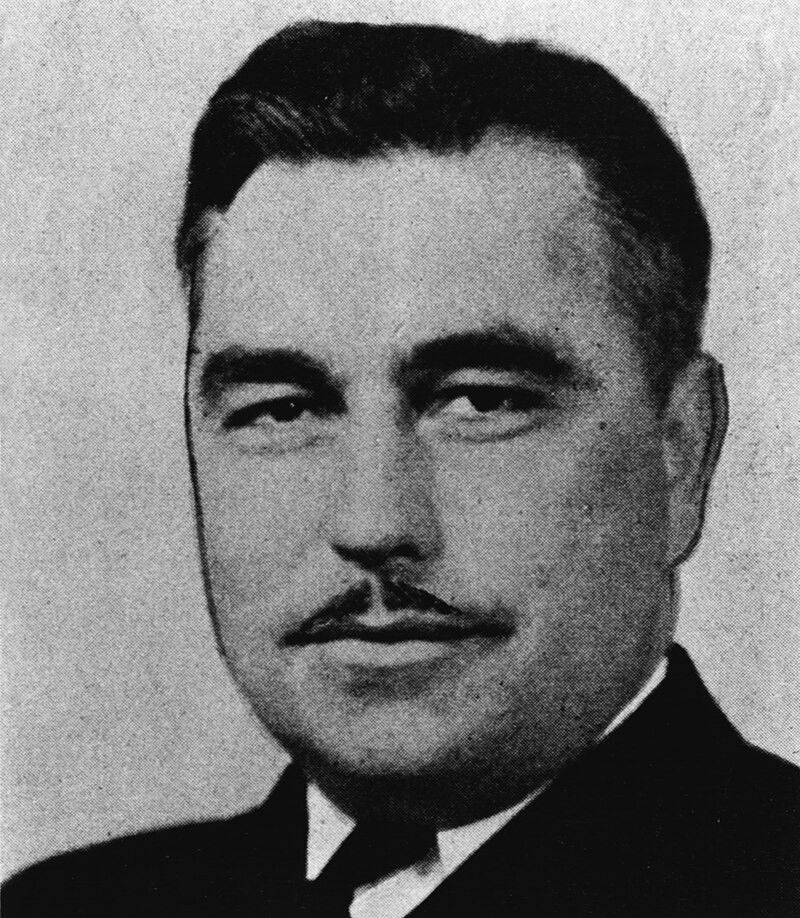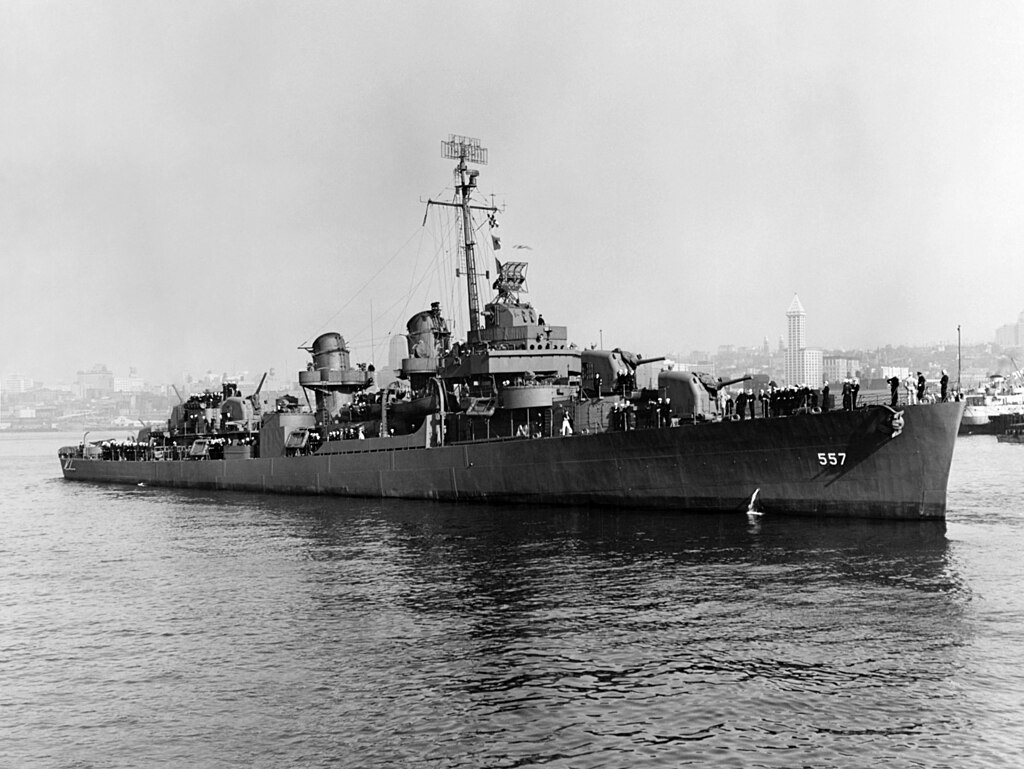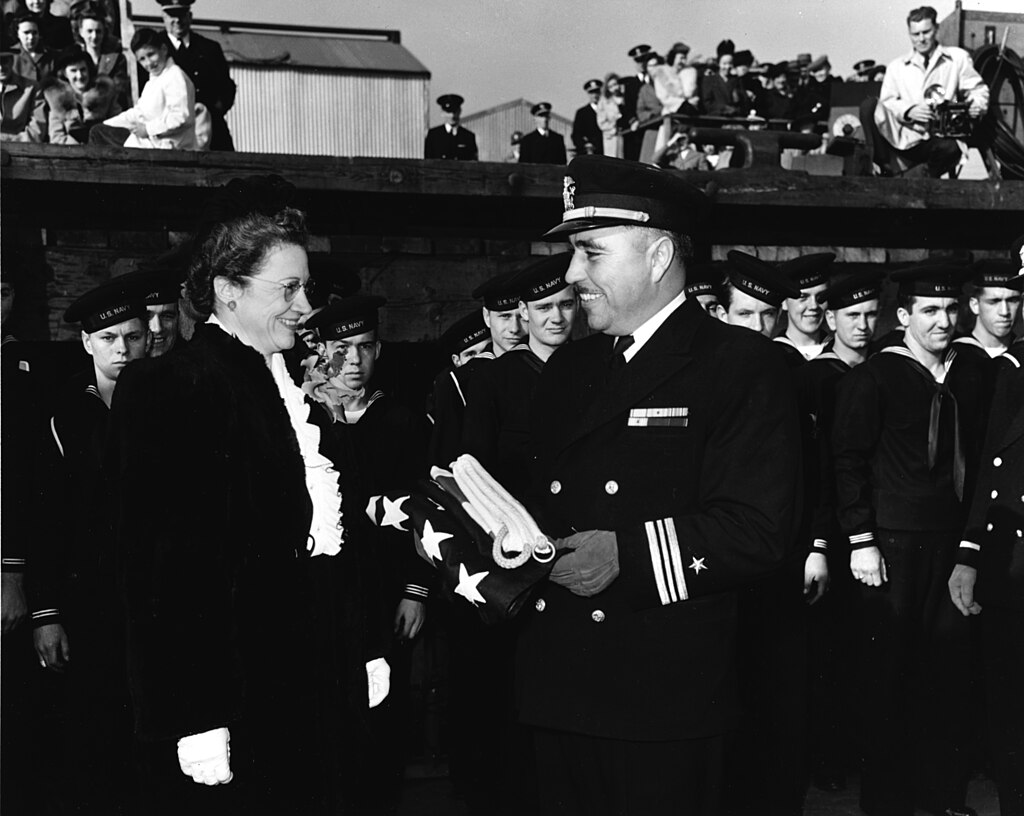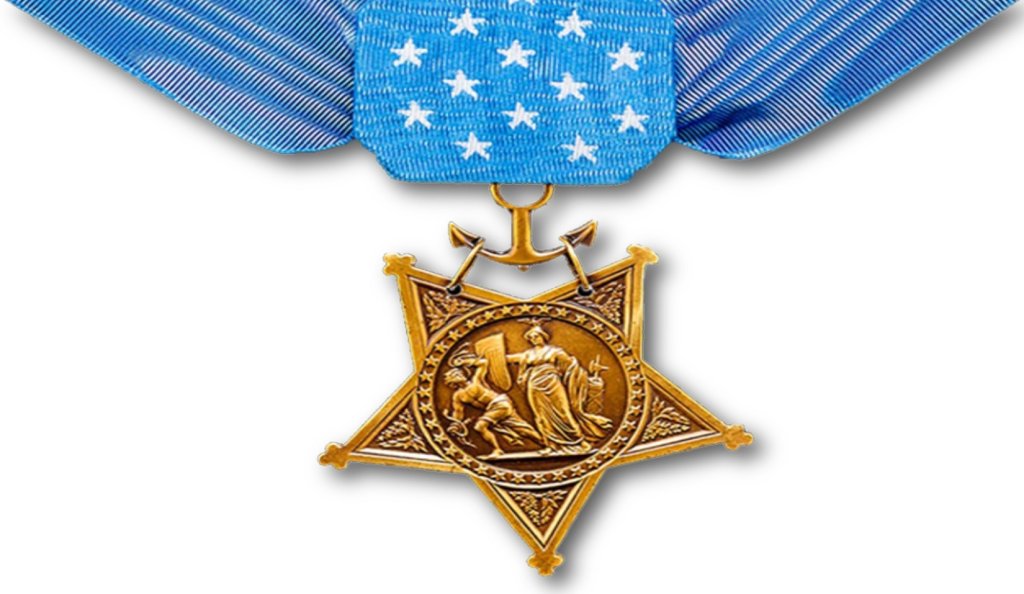 Name: Ernest Edwin Evans
Name: Ernest Edwin Evans
Rank: Commander
War: World War II (Battle off Samar, Leyte Gulf)
Date of Action: October 25, 1944
Unit: U.S.S. Johnston (DD-557)
Born: August 13, 1908 – Pawnee, Oklahoma
Entered Service From: Oklahoma
Summary of Action
In one of the most audacious stands in naval history, Commander Ernest E. Evans led the destroyer USS Johnston into a hopeless fight against a vastly superior Japanese fleet during the Battle off Samar — part of the larger Battle of Leyte Gulf. When radar revealed approaching battleships and cruisers, Evans was the first to act. He ordered full speed ahead, laid down a smokescreen to shield the escort carriers under his protection, and opened fire.
Charging into a wall of shells and explosions, Evans personally led the Johnston’s torpedo attack — scoring hits against enemy cruisers and forcing the Japanese to maneuver wildly. Even after his ship was hit repeatedly and communications were destroyed, he refused to withdraw. With the Johnston burning and its steering jammed, Evans shifted command to the fantail, shouting orders through a hatch to men turning the rudder by hand. For more than three hours, he and his crew fought battleships ten times their size, hammering away until their guns fell silent.
 Commander Evans went down with his ship. His gallant stand helped save the escort carriers and turned back the Japanese Center Force — an act of valor that became legend among sailors. “A fighting ship,” Evans had promised his crew, “and I intend to go in harm’s way.” He kept his word.
Commander Evans went down with his ship. His gallant stand helped save the escort carriers and turned back the Japanese Center Force — an act of valor that became legend among sailors. “A fighting ship,” Evans had promised his crew, “and I intend to go in harm’s way.” He kept his word.
Medal of Honor Citation
EVANS, ERNEST EDWIN
Rank and organization: Commander, U.S. Navy. Born: 13 August 1908, Pawnee, Okla. Accredited to: Oklahoma. Other Navy awards: Navy Cross, Bronze Star Medal.
Citation: For conspicuous gallantry and intrepidity at the risk of his life above and beyond the call of duty as commanding officer of the U.S.S. Johnston in action against major units of the enemy Japanese fleet during the battle off Samar on 25 October 1944. The first to lay a smokescreen and to open fire as an enemy task force, vastly superior in number, firepower and armor, rapidly approached, Comdr. Evans gallantly diverted the powerful blasts of hostile guns from the lightly armed and armored carriers under his protection, launching the first torpedo attack when the Johnston came under straddling Japanese shellfire. Undaunted by damage sustained under the terrific volume of fire, he unhesitatingly joined others of his group to provide fire support during subsequent torpedo attacks against the Japanese and, outshooting and outmaneuvering the enemy as he consistently interposed his vessel between the hostile fleet units and our carriers despite the crippling loss of engine power and communications with steering aft, shifted command to the fantail, shouted steering orders through an open hatch to men turning the rudder by hand and battled furiously until the Johnston, burning and shuddering from a mortal blow, lay dead in the water after 3 hours of fierce combat. Seriously wounded early in the engagement, Comdr. Evans, by his indomitable courage and brilliant professional skill, aided materially in turning back the enemy during a critical phase of the action. His valiant fighting spirit throughout this historic battle will venture as an inspiration to all who served with him.

